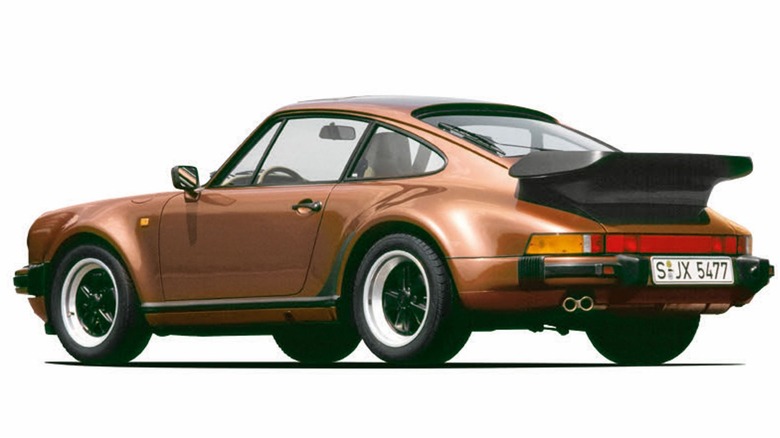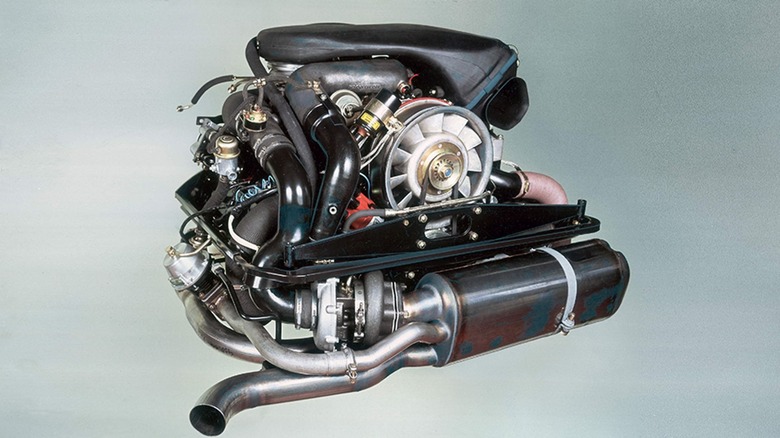The Porsche That Helped Bring Turbochargers To The Masses
Turbocharging is by far the most common form of forced induction (essentially shoving more air back into the engine). A turbocharger uses exhaust gas from an engine's combustion process to spin a small turbine that compresses air and shoves it back into the engine to aid in combustion. Most turbochargers look like a metal snail perched in the engine bay. Better combustion equals more power. Supercharging, the other less common form of forced induction does not use exhaust gases. Instead, it draws power from the engine's crankshaft to compress air that is fed back into the engine. Most superchargers sit on top of the engine and look like a metal box attached to a pulley. There are benefits and drawbacks of both supercharging and turbocharging, but at the end of the day, it adds power to the engine.
Turbos can be much more compact and can aid in fuel efficiency. Ford's ubiquitous EcoBoost line of engines, for example, utilize turbochargers. In modern lineups, turbocharging has become a fairly common practice to the point where it's hardly shown on automotive badging. That was not the case decades ago. If a car was turbocharged, there would be several badges all over the car advertising the fact it benefitted from forced induction. Turbos had a heyday in the 1980s and 1990s with cars like the Toyota Supra. But the technology really became known to the automotive public in the early 1970s, when Porsche tried its hand at turbocharging.
The Porsche gets more power
In the early 1970s, the Porsche 911 was in need of an upgrade. Porsche engineers updated safety features with the addition of U.S.-mandated five-mile-per-hour bumpers. it started galvanizing the body for better rust prevention, and a host of other upgrades. By far the biggest upgrade to the already venerated 911 was a turbocharger in 1974. It was dubbed the Porsche 930. In 1977, the 930's engine displacement was increased to 3.3 liters and became, in technical terms, a performance monster.
The 930 accelerated from zero to 60 miles per hour in 5.2 seconds. That's respectable in 2023, but astonishingly quick 46 years ago. It made 295 horsepower and 303 foot-pounds of torque from its flat-six powerplant, allowing it to achieve a top speed of over 160 miles per hour.
From then on, the Porsche 911 Turbo became the model to get and showed the sports car buying world that the little snail in the engine meant serious business. In the 1970s, it was revolutionary. By the 1980s, it was a performance car legend.

